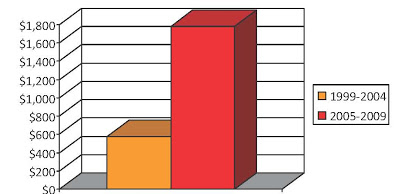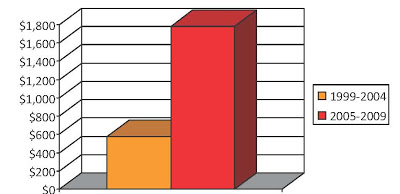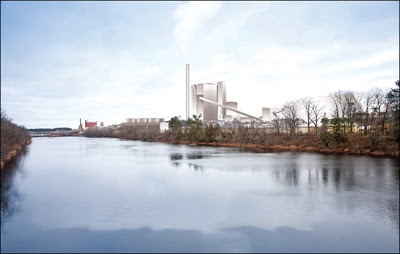
by jboullion | Apr 7, 2010 | Uncategorized
A commentary by Michael Vickerman, executive director of RENEW Wisconsin:
For Immediate Release
April 7, 2010
For More Information Contact
Michael Vickerman
608.255.4044
mvickerman@renewwisconsin.org
Costs of coal plants keep going up
In recent weeks, some groups have suggested that we maintain our current energy portfolio, continuing to rely heavily on coal-fired generation for a substantial amount of our electricity. These groups claim that gradually moving toward more reliance on local, in-state sources of energy will increase electricity costs. These claims have been thoroughly discredited by two economic studies concluding that electricity bills will decrease with the Clean Energy Jobs Act.
Further, these groups refuse to acknowledge the substantial, ongoing costs associated with coal plants. Since 1999, Wisconsin utilities have spent over $2 billion of customer money keeping old, inefficient coal plants running. For comparison purposes, this sum is nearly triple the utilities’ investment in windpower facilities during the same period. Customers have seen the real and substantial impact of these coal plant costs through rising electricity rates over the past several years. These costs are in addition to the more than $700 million (exclusive of transportation costs) we send out of state each year to pay for the coal to fuel these aging plants. Reliance on dirty, antiquated coal plants leaves Wisconsin in a vulnerable position, unable to predict or control energy costs.
Unlike coal, clean resources like biogas, wind and solar will produce energy throughout their productive lives without requiring costly pollution abatement measures. Going forward, the more renewable energy we add to Wisconsin’s energy resource mix, the less exposed we will be to these downstream liabilities. The avoidance of these regulatory risks is another compelling reason for passing the Clean Energy Jobs Act legislation in this session.
Coal Plant Retrofit Costs (1999-2009)
(in Millions of Dollars)


by jboullion | Apr 7, 2010 | Uncategorized
A commentary by Michael Vickerman, executive director of RENEW Wisconsin:
For Immediate Release
April 7, 2010
For More Information Contact
Michael Vickerman
608.255.4044
mvickerman@renewwisconsin.org
Costs of coal plants keep going up
In recent weeks, some groups have suggested that we maintain our current energy portfolio, continuing to rely heavily on coal-fired generation for a substantial amount of our electricity. These groups claim that gradually moving toward more reliance on local, in-state sources of energy will increase electricity costs. These claims have been thoroughly discredited by two economic studies concluding that electricity bills will decrease with the Clean Energy Jobs Act.
Further, these groups refuse to acknowledge the substantial, ongoing costs associated with coal plants. Since 1999, Wisconsin utilities have spent over $2 billion of customer money keeping old, inefficient coal plants running. For comparison purposes, this sum is nearly triple the utilities’ investment in windpower facilities during the same period. Customers have seen the real and substantial impact of these coal plant costs through rising electricity rates over the past several years. These costs are in addition to the more than $700 million (exclusive of transportation costs) we send out of state each year to pay for the coal to fuel these aging plants. Reliance on dirty, antiquated coal plants leaves Wisconsin in a vulnerable position, unable to predict or control energy costs.
Unlike coal, clean resources like biogas, wind and solar will produce energy throughout their productive lives without requiring costly pollution abatement measures. Going forward, the more renewable energy we add to Wisconsin’s energy resource mix, the less exposed we will be to these downstream liabilities. The avoidance of these regulatory risks is another compelling reason for passing the Clean Energy Jobs Act legislation in this session.
Coal Plant Retrofit Costs (1999-2009)
(in Millions of Dollars)

by jboullion | Mar 9, 2010 | Uncategorized
From an announcement/news release issued by the River Falls Municipal Utility:
River Falls, Wis., March 9 – River Falls Municipal Utilities (RFMU) is pleased to announce that the innovative renewable energy finance program called “Save Some Green” is now being offered to residential customers interested in installing qualified renewable energy systems and making efficiency improvements to their property. To accomplish this goal, a loan pool has been established to offer low cost financing, with annual installment payments collected through property tax bills.
River Falls is the first community to offer an innovate program such as this. This finance program was based off a similar program, Berkeley FIRST. The City of Berkeley’s program provides financing to property owners interested in installing solar photovoltaic electric systems. Unlike Berkeley’s primary focus on solar, “Save Some Green” is designed for improvement projects such as: solar photovoltaic panel systems, solar hot water, solar thermal heating, geothermal systems, wind turbines, and major energy efficiency projects in connection with a renewable energy project. . . .
Funding is available to RFMU customers with property within the city limits of River Falls. The program may fund up to 100% of the cost of a qualified improvement with a minimum loan allowance of $2,500 and up to a maximum of $50,000 per property. Loan terms range from 5 to 20 years and are offered at a 4% interest rate.
“RFMU’s POWERful Choices! plans to establish River Falls as a model in the state and region by implementing community-wide sustainability initiatives, such as ‘Save Some Green’”, said Carl Gaulke, General Manager of RFMU. “We are excited to see the River Falls community work together to create a strong conservation ethic for a better energy future.”
For more information visit “Save Some Green” or contact RFMU at (715) 426-3467 or mnoreen@wppienergy.org.

by jboullion | Feb 18, 2010 | Uncategorized

From an article by Sean Ryan in The Daily Reporter:
People in Rothschild have a lot of questions about how We Energies’ proposed $250 million biomass plant project will affect their neighborhood.
The community has not heard much about the project since representatives from the state and We Energies visited Rothschild in September to announce plans to build a 50-megawatt biomass plant next to Domtar Corp.’s paper mill, said Village President Neil Torney, who said the plant’s burner would be built 1,400 feet from his house.
“There’s a few concerned citizens who live near the plant who would, naturally, have a bunch of questions,” he said. Torney said his list of questions is seven pages.
We Energies is sending people to knock on doors within a mile of the project to share information and gather comments, said spokesman Brian Manthey. On Saturday, the utility will hold its first project open house in Rothschild, he said.
We Energies planners, Manthey said, want to hear concerns before applying for Public Service Commission of Wisconsin approval in March or April so the designs can be changed to alleviate problems.
The project will supply jobs to the community and other economic benefits, Manthey said.
“Those are all good things, and those are real good community benefits,” he said. “And we want to make sure that we are out there as well to address any issues.”
Artist’s sketch courtesy of We Energies
by jboullion | Jan 29, 2010 | Uncategorized
From a letter from RENEW Wisconsin to Senators Jeff Plale and Mark Miller, co-chairs of the Select Senate Committee on Clean Energy, who held a hearing on the Clean Energy Jobs Act bill on January 27:
Dear Senators Miller and Plale:
Thank you for holding a hearing yesterday of the Select Committee on Clean Energy on SB 450 (the Clean Energy Jobs Act bill). You heard a great deal of substantive commentary about much of the bill, particularly the sections dealing with energy efficiency and the expanded Renewable Energy Standard.
Unfortunately, the same cannot be said for the discussion on the proposal to institute Advanced Renewable Tariffs in Wisconsin. Early in the hearing, a speaker framed the issue as “asking a little old lady in Cudahy to subsidize an expensive system in Mequon.” From that point, the discussion devolved into a kind of semi-orchestrated gang-tackling on this issue that continued unabated until I was called upon to speak, some seven hours and forty five minutes after the hearing began. While RENEW members who work for or with solar, wind and biogas energy installation companies were present during the hearing and had registered to speak, none were called prior to myself. All but two (Full Spectrum Solar and Ed Ritger) had to leave before the hearing ended.
Now, I don’t believe the first speaker, a labor leader, had intended to belittle the companies that install customer-sited renewable energy systems or dismiss their contribution to Wisconsin’s economy and environment. Nevertheless, the “little old lady from Cudahy” theme took a life of its own, and as a result, the very important issues of how to support these systems through utility rates and whether these rates should be mandated had become thoroughly trivialized by the end.
Allow me to repeat some of the points I made at yesterday’s hearing:
1. The vast majority of the distributed renewable generating units installed in Wisconsin serve schools, dairy farms and other small businesses, churches and local governments.
2. Utilities are not in the business of installing these systems themselves.
3. In many cases the renewable energy installation went forward because there was a special buyback rate available to accelerate the recovery of the original investment made by the customer. Yesterday, I gave the example of the Dane County community anaerobic digester project that, once operational, will treat manure taken from several nearby dairy farms in the Waunakee area and produce two megawatts of electricity with it. The electricity will be purchased by Alliant Energy through a voluntary biogas tariff worth 9.3 cents/kWh. Unfortunately, Alliant’s biogas program is fully subscribed and is no longer available to other dairy farmers, food processing companies and wastewater treatment facilities served by Alliant.
4. Companies that install solar, wind and biogas energy systems are quintessentially small businesses, many of them family-owned. Renewable energy contractors and affiliated service providers constitute one of the few market sectors where young adults who have acquired the necessary skills to do the job well can find meaningful work at decent pay.
5. By its very nature, distributed renewable energy delivers nearly 100% of its economic punch to the local economy.




